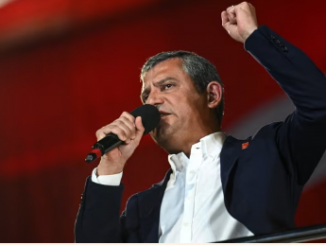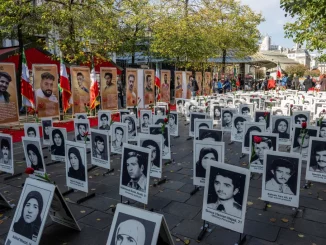
| Published June 29, 2025
A brutal church bombing in Damascus has reignited suspicions of deep-seated corruption and sinister alliances within the Syrian regime. While authorities quickly blamed Islamic extremists, emerging evidence now points in a far more disturbing direction—suggesting that the government itself, or elements closely aligned with it, may have orchestrated the attack on its own Christian population. With survivors still reeling and the faithful burying their dead, questions mount about whether this was truly terrorism from the outside—or a calculated act of terror from within.
📌 Article Summary
-
Church attack background
On June 22, 2025, a suicide-bombing and shooting at the Greek Orthodox Mar Elias Church in Damascus killed at least 25 worshippers and injured around 63 others during Sunday service -
Government claims vs. suspicions
The Syrian Interior Ministry immediately blamed ISIS, while a lesser-known jihadist group, Saraya Ansar al-Sunnah, claimed responsibility.
But several factors have led to suspicions of Syrian government (HTS-led) involvement—suggesting a possible cover-up. -
Evidence suggesting regime complicity
-
A bomb suspect reportedly treated at a government military hospital was linked to the Ministry of Defense
-
This fits a troubling pattern: in March 2025, HTS-aligned forces carried out sectarian massacres targeting Alawite civilians, executing door-to-door raids
-
-
The rise of HTS and ongoing sectarian campaigns
-
HTS, with its roots in al-Qaeda’s Jabhat al-Nusra, has overtly rebranded—but retains extremist ideology
-
Its de facto government has already been implicated in mass violence against religious and ethnic minorities.
-
-
Implications for Christian minorities
-
Syrian Christians, reduced from 1.5 million pre-war to ~400,000 today, face existential risk if the government can weaponize extremist proxies
-
A church attack undertaken by the state or its affiliates would shatter any remaining trust in official protection.
-
🧭 Contextual Verification
-
Event confirmed: The Mar Elias Church attack occurred on June 22, 2025, in Damascus, with 25+ killed, 63 wounded, and responsibility attributed to ISIS and Saraya Ansar al-Sunnah
-
March 2025 massacres: More than 1,000 people, mainly Alawite civilians, were reportedly killed in systematic violence linked to HTS-affiliated government forces between March 6–17, 2025
-
HTS background: HTS officially broke from al-Qaeda in name but maintains deep ideological continuity with extremist jihadism and leads de facto governance in parts of Syria
🧠 Resulting Effects
-
A Government That Fails to Protect—or Deliberately Targets—Its Own People
If even partially true, the suggestion that Syrian government-linked factions facilitated or orchestrated the Mar Elias Church attack would mark a terrifying departure from mere state failure to outright state betrayal. This would mean that instead of serving as guardians of public safety, elements within the regime are exploiting sectarian divisions for political or ideological ends—sacrificing vulnerable religious minorities in the process. -
The Erosion of Trust Among Religious Minorities
Syrian Christians have long walked a tightrope, striving to survive amid the chaos of civil war and shifting political alliances. Any involvement by government actors in church violence could permanently break that fragile trust. Without credible protection or international guarantees, even the most deeply rooted Christian communities will see emigration not as an option—but a necessity. -
The Weaponization of Extremism for Political Control
Accusations that the regime may be using jihadist groups or their remnants as a covert tool of political pressure reflect a broader and disturbing regional pattern—where extremist proxies are leveraged to destabilize enemies, intimidate dissidents, or justify crackdowns. This tactic blurs the line between counterterrorism and terror itself, turning governance into a mask for violence. -
The Dwindling Space for Christianity in the Middle East
From Iraq to Egypt and now Syria, Christian populations across the region continue to shrink under the weight of targeted violence, discrimination, and displacement. The church bombing is not an isolated incident—it is part of a wider pattern of religious cleansing, and international silence only deepens the damage. -
Global Double Standards and Selective Outrage
When Christian minorities are attacked in the Middle East, international response tends to be muted, cautious, or absent—often due to geopolitical alliances, media biases, or fears of appearing sectarian. Compare this to the outcry over similar attacks against other groups, and the discrepancy is stark. The West’s commitment to religious freedom rings hollow when it refuses to speak up for persecuted Christians. -
HTS and the Illusion of Moderation
Hay’at Tahrir al-Sham (HTS) has attempted to present itself as a reformed, “moderate” Islamist authority since taking administrative control of parts of Syria. However, its alleged ties to groups involved in sectarian killings and the church bombing further undermine this narrative. The global community must reckon with the reality that such groups can rebrand—but their core ideology often remains unchanged. -
A Dangerous Precedent for Post-War Syria
If this incident is swept under the rug, it sends a dangerous message: that sectarian violence, even against worshippers in a sacred space, can be carried out with impunity. It sets a precedent that weakens accountability and deepens division—making reconciliation in a post-war Syria even more difficult.
 Bottom Line:
Bottom Line:
The Mar Elias Church bombing is more than a singular act of terror—it is a chilling symbol of Syria’s deepening moral collapse. If the evidence pointing to regime involvement proves true, it marks a dangerous shift: from mere failure to protect minorities, to active participation in their persecution. For Syria’s dwindling Christian population, the message is devastatingly clear—there is no sanctuary left, not even in the house of God. As the world looks away, a centuries-old faith community risks being extinguished in silence.





Be the first to comment